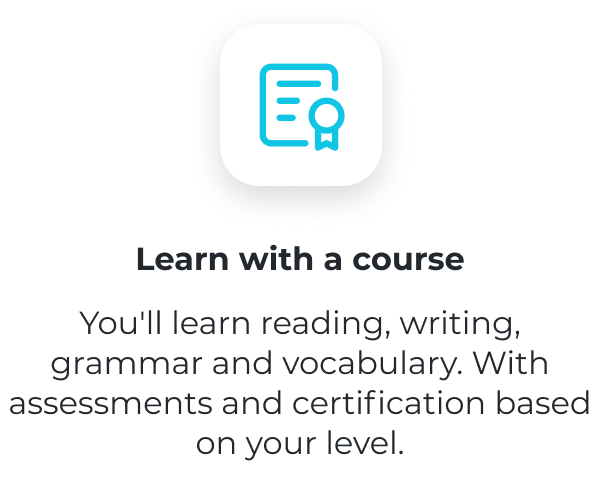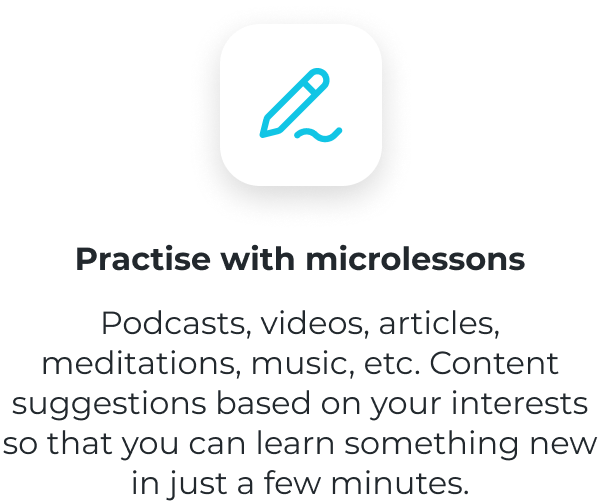Imperatives in English:
How are they used?
Do you know the different uses of the imperative in English? Register free for the ABA English course to learn how to use the imperative and much more in an entertaining, efficient way and join more than 30 million students who have trusted us.
THE IMPERATIVE IN ENGLISH
In English, as in many other languages, we can influence the person we are speaking to by prompting them to perform or to not perform a specific action. The most direct way of doing this is through use of the imperative, as the name of this verbal mood indicates. The imperative mood in English is generally used to give an order, to prompt someone to do something, to give a warning or to give instructions.
There are several distinguishable forms of the imperative in English: affirmative, negative, and exhortative, as well as the more cordial ways of expressing an order. Let’s look at the characteristics of each of these together.
30+ MILLION STUDENTS
Come and learn English with the
biggest digital English academy
in the world
AFFIRMATIVE IMPERATIVES
This is the most common and direct form of the imperative. There is only second person singular and plural. It is formed by using the infinitive of the verb without the “to“.
Hurry up or you’ll miss the show!
Switch the TV off.
Put the flour, milk, and eggs in a bowl and whisk until smooth.
Given that this is a very direct way to give orders, it can be accompanied by other expressions such as just, please, and if you don’t mind in order to soften the tone.
Just wait for me here, please.
Close the door, if you wouldn’t mind.
NEGATIVE IMPERATIVES
The negative form of the affirmative imperative requires the addition of the auxiliaries do + not (don’t in its contracted form) to be added to the infinitive version of the verb without the “to“.
Don’t be late!
Do not go to work today.
Don’t keep opening the fridge!
EXHORTATIVE IMPERATIVES
More than an imperative, this imperative is an exhortation and only applies to the first-person plural. In some cases, it is accompanied by please. It is formed using the prefix Let’s + the infinitive of the verb without “to” in the affirmative form.
Let us observe a minute of silence, please.
In the negative form, the addition of the negation not is required between the prefix and the verb.
Let’s not go in, please.
When the prefix Let by a personal pronoun other than us, the meaning changes to “allow”.
Let me do the washing up for once.
USING THE IMPERATIVE FOR SUGGESTIONS…
In some cases, the imperative can be used to give suggestions or to make proposals. In these cases, we have two constructions:
- Let’s + infinitive verb without the “to” (Exhortative Imperative)
Let’s not miss the train.
Let’s take a holiday!
- Why don’t we + infinitive verb without the “to“
Why don’t we go to the beach?
Why don’t you tell her the truth?
IMPERATIVE + PERSONAL PRONOUNS
In some cases, a personal pronoun can be added to reinforce the imperative value. But, be careful to not appear impolite. This verbal form is only used for a strong and decisive order.
Can I go home?
No, you wait another 10 minutes.
Don’t you tell me what to do!
IMPERATIVE ADDRESSED TO A GROUP OF PEOPLE
In some situations, we must speak to a clearly-defined group of people. In that case, we can use words like somebody , everybody, and all .
Somebody call an ambulance. Quick!
Everybody sit down, please.
All rise! (used in courtrooms)
IMPERATIVE + DO
In some cases, the auxiliary Do can be added to give a more formal and courteous appearance to the imperative.
Do come in!
Do come and visit us next time.
Do help yourselves to the buffet!
All of these phrases, which you will definitely find very useful, are taken from an ABA English video class. If you are thinking about improving your English, you can try our free course. We offer 144 free video classes and the same quantity of short films that will help you both learn English and to understand how to speak English appropriately in the different contexts of your daily life. What are you waiting for? Join the 17 million students at ABA English today.
Do you know what
your English level is?
Take a test now.
Sign up on our page and take the level test for free. You’ll find out your level in just a few minutes to help you continue progressing through the course.

How to memorize the uses of the imperative in English
Sometimes too much theory can be a little daunting. Don’t worry!
We’ve made you a summary table to review the previous information and to have the basic concepts together with concrete examples.
| Type of Imperative | Structure | Example |
| Affirmative imperative | Infinitive of the verb (without the to) | Come here right now, I have to talk to you.
|
| Negative imperative | Don’t / Do not + verb in the infinitive without the to) | Don’t quit now, you’re so close to the finish line, you have my support.
|
| Exhortative imperative or to give a suggestion | Let’s + infinitive (without the to) | Let’s leave this place please, I don’t feel comfortable.
|
| Imperative + personal pronoun | Personal pronoun + verb in the infinitive (without the to) | You don’t get to tell me how I’m supposed to feel after everything we went through.
|
| Imperative directed at a group | Indefinite pronoun + verb in the infinitive (without the to) | Everybody be quiet now, please, the lesson is going to start soon.
|
| Do + imperative | Do + verb in the infinitive (without the to) | Do help me with this, please. I don’t even know where to start.
|
We’ve made you a summary table to review the previous information and to have the basic concepts together with concrete examples.
Sometimes too much theory can be a little daunting. Don’t worry!
| Type of Imperative | Example |
| Affirmative imperative
Structure: Infinitive of the verb (without the to) | Come here right now, I have to talk to you.
|
| Negative imperative
Structure: Don’t / Do not + verb in the infinitive without the to) | Don’t quit now, you’re so close to the finish line, you have my support.
|
| Exhortative imperative or to give a suggestion
Structure: Let’s + infinitive (without the to) | Let’s leave this place please, I don’t feel comfortable.
|
| Imperative + personal pronoun
Structure: Personal pronoun + verb in the infinitive (without the to) | You don’t get to tell me how I’m supposed to feel after everything we went through.
|
| Imperative directed at a group
Structure: Indefinite pronoun + verb in the infinitive (without the to) | Everybody be quiet now, please, the lesson is going to start soon.
|
| Do + imperative
Structure: Do + verb in the infinitive (without the to) | Do help me with this, please. I don’t even know where to start.
|
Exercises to Practice the Imperative in English
Put the following words in order to create sentences in the imperative.
1. go / don’t / it’s / late / outside / too
____________________
2. that / in / don’t / the / to / open / door / cold / don’t / get / I / want
____________________
3. are / late / we / going / hurry up / be / to
____________________
4. they / up / I / volume / can’t / turn / saying / the / what / hear / are
____________________
5. here / pass / from / bread / I / the / please / it / from / reach / can’t
____________________
6. here / I / see / stay / you / where / can
____________________
Answers:
- Don’t go outside, it’s too late.
- Don’t open that door, I don’t want the cold to get in.
- Hurry up, we are going to be late.
- Turn the volume up, I can’t hear what they are saying.
- Pass the bread please, I can’t reach it from here.
- Stay here where I can see you.


























